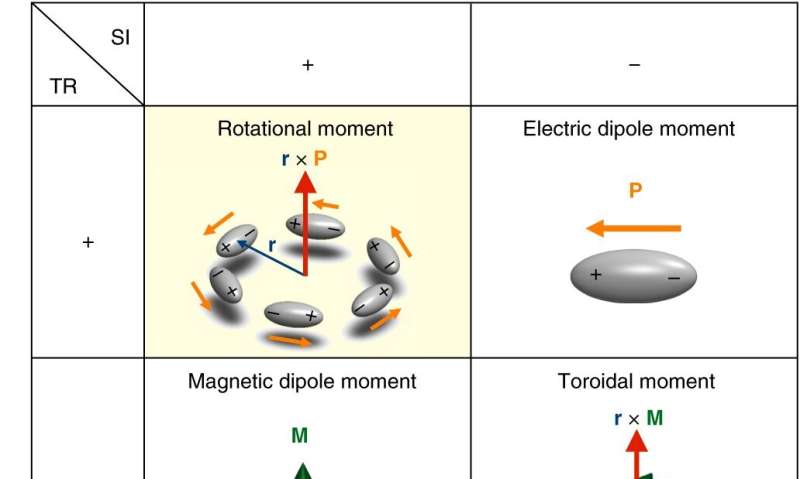November 6, 2019 report
Rotational form of spontaneous crystallographic ordering discovered in ferroic material

A team of researchers from the University of Michigan and Rutgers University has discovered a rotational form of spontaneous crystallographic ordering in a ferroic material. In their paper published in the journal Nature Physics, the group describes their work with ferro-rotational orders under different conditions and what they learned about them. Manfred Fiebig with ETH Zurich has published a News & Views piece on the work done by the team in the same issue—he also gives a brief history of ferromagnetism and what has been learned about it over the past 2,000 years.
As Fiebig notes, all ferroic materials have some sort of switchable ordering that comes about spontaneously. He further notes that with ferromagnetism, magnetic moments line up in uniform ways and can be switched by exposing them to a magnetic field. But, as he also notes, there are examples of ferro-rotational materials—another type of spontaneous ordering of atoms. Such materials have an order parameter that is an axial vector which is invariant under spatial inversion and time reversal operations. It also constitutes the final category of ferroics—after ferro-toroidal, ferroelectric and ferromagnetic. The researchers note that materials of this order have become increasingly popular for use in quantum applications. They further note that until now, such materials have not been given serious study.
The work by the team involved using a technique that involved doubling the frequency of light waves projected from a laser. The process, known as second-harmonic generation was useful for studying a ferro-rotational material RbFe(MoO4)2 because of its extreme sensitivity to the symmetry involved with frequency doubling materials. And as Fiebig notes, all ferroic materials experience symmetry reduction when ordering, making the technique particularly useful. The researchers used it to first identify and then characterize ferroic states. Removal of the mirror planes from the material, revealed the emergence of the uniform c±-like rotation of the octahedra. The signal also allowed for identifying the c+ and c− domains. In so doing, the researchers found that the areal ratio of the domains changed with temperature. They conclude by suggesting that their work showed that the conjugated field might be related to a 4th power combination of electric-field components.
More information: Wencan Jin et al. Observation of a ferro-rotational order coupled with second-order nonlinear optical fields, Nature Physics (2019). DOI: 10.1038/s41567-019-0695-1
Journal information: Nature Physics
© 2019 Science X Network





















